2003 Toyota Tundra Tires, Repair & Service
Get Started
Complete Auto Care for Your 2003 Toyota Tundra
-
TIRES FOR YOUR 2003 Toyota Tundra View Tire Info GET TIRE PRICING
-
REPAIR FOR YOUR 2003 Toyota Tundra View Repair Info SCHEDULE REPAIR
-
MAINTENANCE FOR YOUR 2003 Toyota Tundra View Maintenance Info SCHEDULE MAINTENANCE
-
OFFERS FOR YOUR 2003 Toyota Tundra Limited Time Tire Offers VIEW ALL COUPONS
2003 Toyota Tundra Tires
Recommended Tires | Tire Information
2003 Toyota Tundra Tires Sizes, Speed Ratings, and Inflation
Not sure about your 2003 Toyota Tundra tire size? Use the following chart to find information on tire size, speed rating, and inflation.
| Trim Level | Speed Rating | Inflation in PSI F/R | Tire Size |
|---|---|---|---|
| 2003 Toyota Tundra Limited* | S | 29 PSI/32 PSI | P265/65R17 |
| 2003 Toyota Tundra Limited* | S | 26 PSI/29 PSI | P265/70R16 |
| 2003 Toyota Tundra Base* | S | 26 PSI/35 PSI | P245/70R16 |
| 2003 Toyota Tundra Base* | S | 26 PSI/29 PSI | P265/70R16 |
| 2003 Toyota Tundra SR5* | S | 26 PSI/29 PSI | P265/70R16 |
| 2003 Toyota Tundra SR5* | S | 32 PSI/35 PSI | P245/70R16 |
| 2003 Toyota Tundra SR5* | S | 26 PSI/29 PSI | P265/70R16 |
| 2003 Toyota Tundra SR5* | S | 29 PSI/32 PSI | P265/65R17 |
|
2003 Toyota Tundra Limited* Speed Rating: S Inflation F/R: 29 PSI/32 PSI |
|
2003 Toyota Tundra Limited* Speed Rating: S Inflation F/R: 26 PSI/29 PSI |
|
2003 Toyota Tundra Base* Speed Rating: S Inflation F/R: 26 PSI/35 PSI |
|
2003 Toyota Tundra Base* Speed Rating: S Inflation F/R: 26 PSI/29 PSI |
|
2003 Toyota Tundra SR5* Speed Rating: S Inflation F/R: 26 PSI/29 PSI |
|
2003 Toyota Tundra SR5* Speed Rating: S Inflation F/R: 32 PSI/35 PSI |
|
2003 Toyota Tundra SR5* Speed Rating: S Inflation F/R: 26 PSI/29 PSI |
|
2003 Toyota Tundra SR5* Speed Rating: S Inflation F/R: 29 PSI/32 PSI |
* Note: these models have different tire sizes depending on vehicle options.
Recommended Tires for Your 2003 Toyota Tundra
What tires are best for a 2003 Toyota Tundra? Check out the following tire brands and types.
 Blizzak DM-V2
Blizzak DM-V2
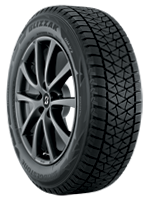
- No warranty
- Winter
- Winter
 ALENZA AS ULTRA
ALENZA AS ULTRA
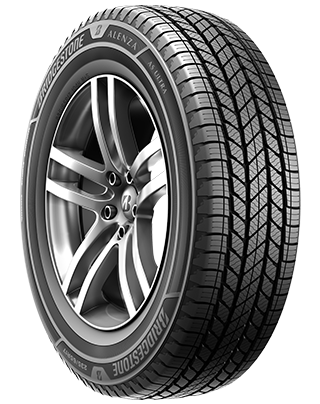
- No warranty
- All-Season
- Light Truck Tires
 Dueler A/T Revo 3
Dueler A/T Revo 3
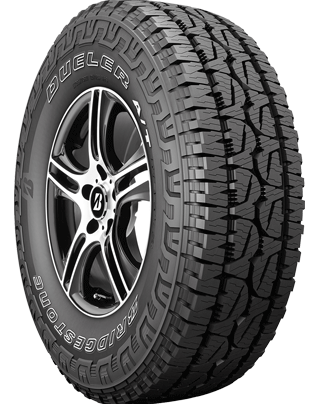
- Platinum Pact Limited Warranty
- All-Season
- Light Truck Tires
 Dueler H/T 684 II
Dueler H/T 684 II
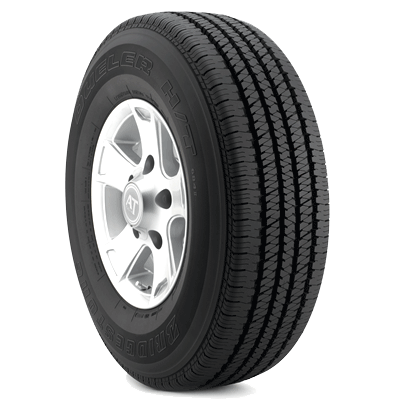
- Platinum Pact Limited Warranty
- All-Season
- Light Truck Tires
 Destination A/T2
Destination A/T2
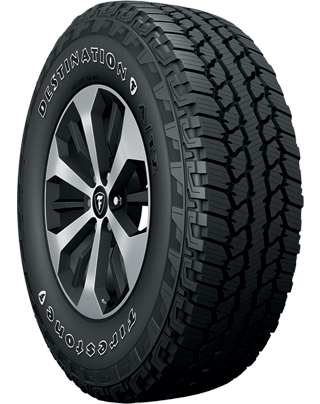
- Gold Pledge Limited Warranty
- All-Season
- Light Truck Tires
 Destination LE3
Destination LE3
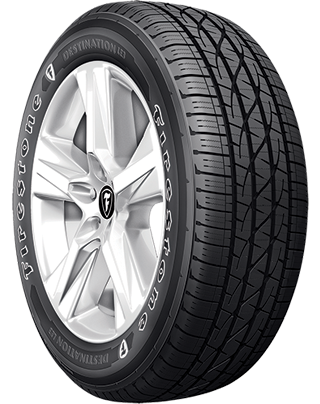
- No warranty
- All-Season
- Light Truck Tires
 Winterforce 2 UV
Winterforce 2 UV
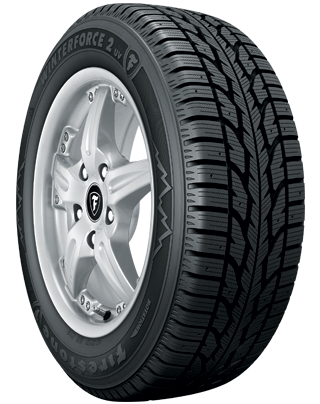
- No warranty
- Winter
- Winter
 Destination X/T
Destination X/T
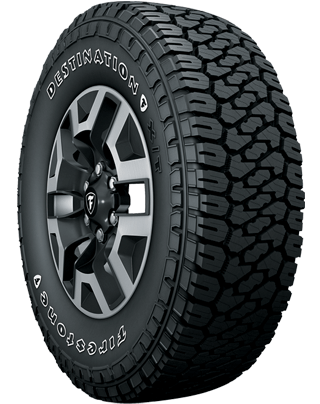
- Gold Pledge Limited Warranty
- All-Season
- Light Truck Tires
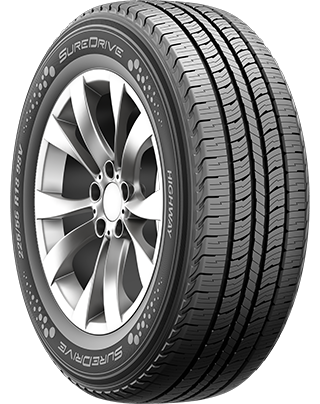
- No warranty
- All-Season
- Light Truck Tires
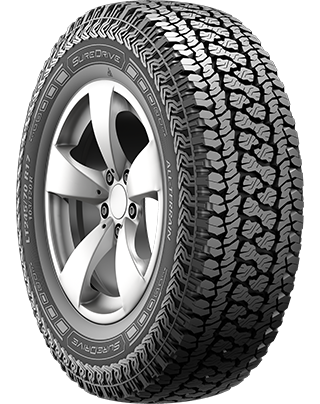
- No warranty
- All-Season
- Light Truck Tires
 OPEN COUNTRY A/T III
OPEN COUNTRY A/T III
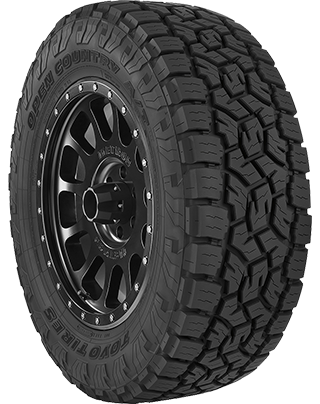
- No warranty
- All-Season
- Light Truck Tires
 OPEN COUNTRY HTII
OPEN COUNTRY HTII
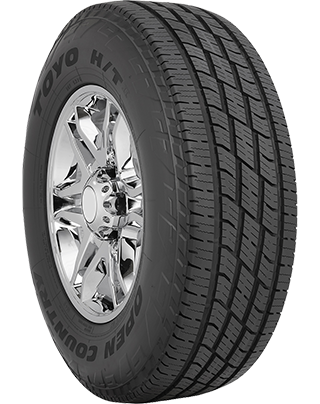
- No warranty
- All-Season
- Light Truck Tires
Choosing 2003 Toyota Tundra Tires
Beyond the correct tire size, there are a couple of other factors to consider when buying Toyota Tundra tires like which tire brands you like most and where you drive. When evaluating your driving conditions, think about where you live (countryside vs. city vs. mountains) and the kind of unexpected weather you're likely to experience. Many drivers who live in states that experience all four seasons choose to purchase two sets of tires: one for winter and one for summer. Other drivers buy one set of all-season tires instead. That way they don't have to return to the tire shop and their vehicle is always ready for sun, rain, and light snow!
Driving style is next on the list to think about when buying tires. If you're an avid off-roader who yearns to pioneer new paths, you have very different tire needs than a highway commuter who doesn't hit the hills very often. Visit your local Firestone Complete Auto Care for help selecting the tire that's right for you, or get started by browsing tires that fit your Toyota Tundra.
Installing Toyota Tundra Tires
We sell tires, but we also service them and care for all the around-the-wheel components. We're a tire store that also offers professional tire installation, maintenance, and rotation, along with complete auto care. We make it easy to buy new 2003 Toyota Tundra tires online and book an installation appointment at the same time.
2003 Toyota Tundra Tire Q&A
-
Is Toyota tire inflation important? Even a tiny decrease in tire pressure could impact your safety and fuel economy. Maintaining proper tire pressure can help increase fuel economy, improve braking time, and boost tire lifespan.
-
What do the numbers on my Toyota Tundra tires mean? Your tire sidewall numbers tell you the recommended load carrying capacity, speed rating, treadwear, traction, and tire size. Talk to a tire technician to learn how to read Toyota tire numbers.
-
Can I check the tread depth on my Toyota tires at home? Stay on top of your tire tread depth to help avoid a dangerous drive. You can check tread depth with a penny. Hold the penny so that Abraham Lincoln is facing you, then place your penny into a tread groove upside down. If you can see the top of Abe’s head, your tread is shallow and it might be time for new Toyota Tundra tires. Grab a penny. Hold the so that Abe Lincon's head is facing you and his hair is pointing toward the ground. Then, place the penny into a tread groove. If you can see the top of Abe’s head, your tread is shallow and it might be time for new Toyota Tundra tires.
2003 Toyota Tundra Repair
How do I learn more about auto repairs? Click on a service below to read about the types of Toyota Tundra repairs we do at Firestone Complete Auto Care.
Get Repairs for Your 2003 Toyota Tundra
Car repairs: for many drivers, that phrase is a dreadful one. But at Firestone Complete Auto Care, we strive to give you the excellent repair experience you deserve. Bring your 2003 Toyota Tundra in for repair services and our skilled repair technicians will get your Tundra back on the road. We’ll start by assessing what repairs may be needed, and we’ll provide you with a detailed explanation of what we recommend. We value your trust, so we recommend only the repairs we think are necessary for your safety on the road.
How Much Does Toyota Tundra Repair Cost?
The cost to repair your 2003 Toyota Tundra depends on which repairs are needed, costs of replacement parts or repair supplies, the labor involved, and the state you live in. They're updated regularly!
A few different aspects can influence repair costs for your 2003 Toyota Tundra, like
Questions About 2003 Toyota Tundra Auto Repairs
-
Can scheduled maintenance help me avoid repairs? One of the best ways to prevent 2003 Toyota Tundra repairs is by staying on top of your Toyota maintenance schedule. This schedule is written by the people who made your vehicle and they know best how to keep it running smoothly.
-
What does it mean to be 'in tune' with your car? You’re in your car, day in and day out. So, it’s only expected that you know your car better than anyone else! If you notice mysterious smells, strange engine noises, or other out-of-the-ordinary symptoms while driving, trust your instincts and stop into Firestone Complete Auto Care for a Courtesy Check. Catching a potential issue early could help prevent Toyota Tundra repairs.
-
Why do you recommend certain repairs for my Toyota? Talk to your technician. We'll never recommend a service or repair for your 2003 Toyota Tundra that we don't think is necessary for your safety.
Brake Repair for Your 2003 Toyota Tundra
You might have a strong and reliable engine in your Toyota Tundra. But if you can't stop it, then it's scrap metal. Don't wait if you're experiencing brake squeaks or a loss of braking power. Safe driving and responsive brakes go hand in hand. Plus, ignoring your brake problems can result in more damage and higher brake repair bills. Get your 2003 Toyota Tundra brakes fixed at Firestone Complete Auto Care. We offer many affordable brake repairs like brake pad/shoe removal and replacement, brake rotor/drum refinishing, brake fluid exchange/bleeding, and brake caliper and wheel cylinder service.
Answers to Your Tundra Brakes Questions
-
What can cause my Tundra to shake when I apply the brakes? If your Tundra shakes when you brake, you could be dealing with warped rotors, faulty brake calipers, worn brake pads or rotors, or loose or worn suspension parts. Schedule a free brake inspection at Firestone Complete Auto Care for help diagnosing your brake issue.
-
What is the average lifespan of Tundra brake pads? Brake pads generally last between 30,000 and 40,000 miles. Your driving can affect how long your Tundra brake pads last, though. For example, mainly driving on highways and gradually braking can help increase the lifespan of your brake pads, and carrying hefty loads or riding your brakes can shorten it.
-
Does brake fluid leak when the car is off? Your Tundra has a closed hydraulic brake system, meaning you should not have a brake fluid leak under normal conditions. However, parts of your brake system can wear out over time or become damaged, which can lead to a brake fluid leak.
2003 Toyota Tundra Drivetrain Repairs
Drivetrains for front, rear, and all-wheel-drive and 4WD vehicles are quite different, so you don't want to go to just anyone for drivetrain repair. You want to go to Firestone Complete Auto Care. We can help repair all of your 2003 Toyota Tundra drivetrain components Your Tundra might need driveshaft repair if you notice vibration as your vehicle accelerates, clunks when shifting, heavy vibrations in your floorboards, or resistance when turning.
Questions About 2003 Toyota Tundra
-
What are the symptoms of a damaged Toyota drivetrain system? Noises toward the back of your Toyota Tundra, leaking fluid, trouble turning — these could all be signs of drivetrain damage you want to address. Take action before something more severe happens.
-
Why is the malfunction indicator light (MIL) on in my Tundra? If your Tundra has its malfunction warning light (more commonly called the check engine light) illuminated, it could indicate engine troubles, problems with the transmission, electrical issues, malfunctioning sensors, connector problems, or misfire issues.
-
How serious is a drivetrain malfunction in my Tundra? Don't ignore a drivetrain malfunction in your Tundra. As soon as you notice a problem, have it checked by a professional mechanic to diagnose the issue and carry out any necessary repairs. Driving with a faulty drivetrain is risky and may further damage your Tundra.
Wheel Alignment for 2003 Toyota Tundra
With an alignment service, adjustments are made to your Toyota Tundra’s suspension system, the connection between the vehicle and the wheels. When your car has an alignment service, the individual angles of your tires are adjusted so that they come into contact with the road in just the right way — the way Toyota intended them to. Before we adjust the alignment of your 2003 Toyota Tundra, we’ll start by checking the current alignment angles. If needed, we'll adjust your wheel alignment angles to match Toyota recommendations.
Answers to Toyota Tundra Alignment Questions
-
How can I avoid knocking my Toyota Tundra out of alignment? When it’s safe to do so, avoid driving over potholes or hitting curbs. These road obstacles can wreak havoc on your wheel alignment, as can wear and tear from rough road conditions.
-
How often does your Tundra need a wheel alignment? Generally, it’s wise to have your alignment looked at around every 6,000 miles or 6 months, whichever happens first. You should check your Tundra owner’s manual to verify Toyota’s suggested interval.
-
Do you need to get your Tundra wheels aligned when you get new tires? While you don’t necessarily need to get an alignment when putting new tires on your Tundra, it’s still a good idea. Ensuring your wheels are properly aligned can help support optimal handling, tire wear, and fuel efficiency.
2003 Toyota Tundra Engine Repair
If your 2003 Toyota Tundra needs engine repair, our technicians will provide you with a thorough explanation beforehand. We make recommendations, but you make the final decision. If a service can wait, we’ll make sure you know. We'll also tell you if it's necessary for your safety. We want to give you all the details you need to make an informed decision about your engine repairs. Turn to Firestone Complete Auto Care for your 2003 Tundra engine repairs and you can drive easy knowing that we use Toyota-approved parts and fluids — timing chain or belt, engine oil seal, ignition coil, or other parts.
2003 Toyota Tundra Engine Q&A
-
Why does my Tundra’s check engine light come on when I start it? It's okay if your check engine light comes on when you first start your vehicle. This is a sign that your vehicle is testing its circuits. The light should go off shortly. Bring your vehicle in if it doesn't.
-
Why is my Toyota Tundra making engine noise? Strange engine sounds can be a sign something’s off in your Toyota Tundra. Knocking or tapping could be a symptom of low oil. A high-pitched whistle could signal an intake leak or misaligned belt. Squealing can be traced back to a loose fan belt, and grinding might be a sign of brake problems rather than engine issues.
-
What could damage a Toyota engine? Certain driving habits can hurt your engine. These habits include driving on an empty fuel tank, revving your engine while the vehicle is in Park, or slamming the gas pedal while the engine is still cold. Steer clear of these habits to help protect engine performance and efficiency.
Tire Repair for Your 2003 Toyota Tundra
If the road has been rough on your 2003 Toyota Tundra tires, Firestone Complete Auto Care can help. Our tire technicians can determine whether it's safe to plug and patch the tire, or whether it needs to be replaced. To start, we’ll consider the location of tire damage, the type of issue, the size and scope of the damage, and the amount of wear on your tires.
If your 2003 Toyota Tundra tire puncture can be repaired, we’ll get to work on the steps to fix it: (1) Remove the tire from the wheel for inspection and repair, (2) use a filler to close up the puncture (this is to keep moisture from getting in), and (3) re-seal the inside lining of your tire so that air won’t escape.
Frequently Asked Toyota Tundra Tire Repair Questions
-
Can I drive my Toyota on a flat tire? Driving on a flat tire is not a good idea. Your Tundra engine will keep running with a flat tire, but you could damage your wheel by continuing to drive on a flat.
-
Will a temporary sealant fix my Toyota's flat tire? A temporary sealant may be able to help you get to a repair location safely. But temporary or emergency sealants could possibly damage TPMS sensors, and in some cases may even void the warranty on your Bridgestone or Firestone tires. If your tire needs extensive repair, sealant can add time and labor costs to the process.
-
Why do my Tundra tires keep losing air? Tire punctures, damaged wheels, and leaking valve stems are possible reasons for your Tundra tires continuously losing air.
2003 Toyota Tundra Maintenance
You want your Toyota Tundra to last as long as possible. If you put in the effort to keep up with proper maintenance, you could hit 200,000 miles (or beyond!) in your Tundra.
About 2003 Toyota Tundra Scheduled Maintenance
Instead of waiting for an issue to arise with your Tundra, you can stay ahead of problems before they even begin. Rely on the recommended maintenance schedule that’s been created just for your 2003 Toyota Tundra! This recommended maintenance schedule is written by the auto manufacturer, Toyota themselves. Scheduled maintenance services can vary depending on driving conditions, climate, and other factors; however, recommended maintenance usually includes services like tire rotations, vital fluid checks/exchanges, filter changes, brake pad replacement, and oil changes. Staying on track with routine service appointments can help your Tundra perform better, decrease your risk of dangerous malfunctions on the road, and maybe even save you the headache of dealing with common 2003 Toyota Tundra problems in the future.
Overview of Essential Toyota Tundra Maintenance Needs
Bring your 2003 Toyota Tundra to Firestone Complete Auto Care for factory-recommended maintenance services and our technicians will jump right in with a Courtesy Check. A Courtesy Check helps "set the stage" for your service and catch any small problems before they turn into big repairs. Each Courtesy Check includes a free battery test and an inspection of your Tundra's windshield wiper blades, head and tail lights, filters, fluid levels, tires, and alignment.
Firestone Complete Auto Care is your spot for 2003 Toyota Tundra maintenance. We can help you keep your vehicle (and your life!) running smoothly. Many of our locations have weekend and evening hours for your convenience.
Questions About 2003 Toyota Tundra Maintenance
-
What should I do after hitting a pothole in my Toyota Tundra? Watch out for pothole damage. If your 2003 Tundra is pulling to one side or the other, your tires or suspension system could be calling out for help.
-
When should I switch my Toyota Tundra to high mileage oil? If your Toyota Tundra has ticked past 75,000 miles, consider switching to high mileage oil at your next oil change to give your engine what it needs to go another 75,000 (or more!). High mileage oil: make it a high priority!
-
Why are my Toyota dashboard lights on? Because there might be a problem under the hood. Those warning lights are there for a reason! As soon as you notice that one’s illuminated, take your Toyota Tundra to Firestone Complete Auto Care so you can address any small problems long before they worsen.
2003 Toyota Tundra Battery Replacement & Size
Need more info about Toyota Tundra batteries?
| Battery | Engine | Warranty | Cold Cranking Amps | |
|---|---|---|---|---|
| 24F-3 | V6/3.4L | Replacement 24 months | Performance months | 650 |
| 35-2 | V6/3.4L | Replacement 36 months | Performance months | 640 |
| 24F-RP | V6/3.4L | Replacement 48 months | Performance months | 750 |
| 24F-3 | V8/4.7L | Replacement 24 months | Performance months | 650 |
| 24F-6 | V8/4.7L | Replacement 36 months | Performance months | 750 |
| 24F-RP | V8/4.7L | Replacement 48 months | Performance months | 750 |
2003 Toyota Tundra Batteries
Generally, car batteries last from three to five years. You want to replace your 2003 Toyota Tundra battery before it fails and leaves you stranded. Watch for signs that your current battery is getting too old or too weak. A slow engine crank, an illuminated check engine light or battery signal, swollen battery case, corroded battery terminals, or faded headlights may all indicate that your battery is on its last leg.
Plus, at Firestone Complete Auto Care, we’ll test your battery for free. Drop in for a free battery check and, if needed, get your Toyota Tundra a replacement battery. Automotive batteries are just one of our many areas of expertise. Our technicians are well-acquainted with Toyota’s service specs for Tundra battery CCAs and reserve capacity. Get help figuring out the battery size that fits your car perfectly, and schedule a fast car battery replacement at your earliest convenience.
Commonly Asked Toyota Tundra Battery Questions
-
Why doesn’t my Toyota Tundra battery stay charged? A battery that won't hold a charge is almost as good as dead. The battery might be old. Or, you may have a habit of leaving your car doors open and the lights on overnight. Stop by for a free battery test at your local Firestone Complete Auto Care to learn more about the state of your battery.
-
How long do car batteries last? Car battery lifespan varies depending on a few factors, including driving conditions, accessories, how well it’s maintained, and the type of battery. On average, a car battery lasts about three to five years.
-
Why is there white, crusty buildup on my Tundra’s battery post? If you notice white, crusty stuff around the battery terminals of your Tundra, it's likely corrosion. A chemical reaction between battery acid and the air can create a white, powdery substance that builds up over time on the terminals. This buildup can interfere with the electrical connection between the battery and your Tundra’s electrical system, potentially leading to poor performance, difficulty starting, and other issues.
Oil Changes for 2003 Toyota Tundra
Your 2003 Tundra’s oil should be changed according to Toyota’s recommended oil change intervals. No matter the mileage, your Tundra may need its oil changed ASAP if your check engine light is on, you hear engine knocking, smell oil inside the vehicle, or notice excess vehicle exhaust. You might need an oil change more frequently than what’s recommended by Toyota if you regularly haul heavy loads, drive in dusty areas, adventure off-road, or go long distances at low speeds.
Whether you need high mileage oil, synthetic oil, or conventional oil, you'll find the right 2003 Toyota Tundra motor oil at Firestone Complete Auto Care. Consult Toyota's recommendations to select the right 2003 Tundra oil and talk with a teammate to learn more about our oil options: Quaker State® Advanced Durability™ conventional oil, Pennzoil® High Mileage Vehicle® motor oil, Pennzoil Platinum® Full Synthetic motor oil with PurePlus™ Technology, and Shell Rotella® heavy-duty engine oil. In an oil change service, one of our techs will change your Tundra’s oil, replace and recycle the old oil and filter, inspect all of your other filters, top-off important fluids, and perform a courtesy inspection on your entire vehicle. Get professional engine care by making an oil change appointment for your Tundra today.
2003 Toyota Tundra Oil Change Questions
-
What does it mean if my Toyota Tundra oil light comes on? The oil change light in your Toyota Tundra could be triggered by an overdue oil change. However, if the oil pressure light is on, you may be dealing with low engine oil, a failing oil pump, a clogged oil filter, or a malfunctioning oil pressure sensor.
-
Can I change my Toyota Tundra oil at home? First off, changing your own oil isn’t as easy as you’d think. You’ll have to buy special tools and figure out a way to recycle the old oil properly. Getting a professional oil change reduces the risk of something going wrong during the service, but also helps your car perform down the road.
-
Why is my Toyota Tundra spewing blue or gray exhaust smoke? You could have an oil leak and have a case of burning oil. Looks like it’s time for a professional to take a look. The leak could be the result of worn valve seals, fried piston rings, or old cylinder walls.
Engine Tune-Up Service for Your 2003 Toyota Tundra
Routine engine tune-ups can bring power back to your Tundra. Your nearest Firestone Complete Auto Care location has several options to choose from when it comes to Toyota Tundra engine tune-up services. The first is the standard Firestone Tune-Up. The standard Firestone Tune-Up includes new spark plugs (and installation!), a thorough inspection of engine components, and a lifetime parts warranty*. The second service focuses on your Tundra's filters, specifically replacing the air filter and fuel filter. Our third service is a thorough cleaning of the fuel system. During this type of tune-up, we use a three-step process to get rid of harmful varnish, dirt, and carbon deposit buildup in your Tundra’s fuel injectors, throttle body, and throttle plate. The result? Restored fuel system performance. Here’s something to remember when choosing services: the mileage and service history of your Tundra can determine what kind of service it needs. Chat with a Firestone technician before you jump into a specific service to ensure your engine tune-up money is well-spent.
*Check with a teammate at Firestone Complete Auto Care for complete terms and conditions regarding warranties.
2003 Toyota Tundra Engine Tune-Up Q&A
-
What happens if my Toyota Tundra spark plugs fail? Replace spark plugs on time or about every 30,000 miles or so. Spark plugs are small but mighty. The spark of electricity that the plug emits across a small gap creates the ignition for the combustion needed to start your car. Without that spark, your car won't start.
-
What should I do if I see leaks under my Tundra? Puddles could indicate that your vehicle is leaking coolant, oil, or brake fluid. Ignoring these leaks can lead to permanent engine damage, so address these symptoms ASAP with a tune-up service.
-
How often should I clean my Toyota Tundra fuel injectors? There is no hard and fast rule on how often fuel injectors should be cleaned, and it can vary based on driving habits and fuel type. Some manufacturers may suggest including a fuel system cleaning in your regular maintenance schedule. Or you may need to clean your fuel injectors as needed if you notice signs of a fuel system problem.
2003 Tundra Toyota Steering & Suspension Services
During the first few years you had your 2003 Toyota Tundra, the ride was probably so smooth that you didn’t even think about it! Lately, though, your ride’s been feeling a little bumpy. Maybe your Tundra jolts, pulls to one side, or makes noise whenever you turn or drive over a speed bump. As soon as you notice that something’s “off” with your 2003 Toyota Tundra, bring it in for steering and suspension services. We’ll get to the root of the issue and, if steering and suspension service is needed, we'll explain all of your options and the potential cost.
2003 Tundra Steering & Suspension Q&A
-
Why does my Toyota Tundra bounce so much? Damaged struts or shocks can't dampen road bumps properly, causing your vehicle to feel like a trampoline after each dip or bump.
-
Why does my Tundra tilt forward when I hit the brakes? The forward dip in the front end of your Tundra when you brake is caused by the weight and momentum transferring to the front wheels. If your suspension system is in bad shape, it can fail to distribute this force, leading your front end to dip further downward.
-
What role do tire pressure and tread depth play in my Toyota's suspension? Keeping your tires properly inflated can help reduce strain on the suspension, and also help you notice when you need new tires. A tire that doesn't have an adequate amount of tread can't grip the road or function as well as the manufacturer intended.
A/C Service for Your 2003 Toyota Tundra
Our technicians will work to solve your 2003 Toyota Tundra A/C problems to the best of their ability. During this initial A/C performance check, we’ll look at the state of your 2003 Toyota Tundra’s A/C system to evaluate what repairs are necessary (if any). This check includes a visual inspection, performance test, and pressure and leak test.
Let's say we repair your 2003 Toyota Tundra A/C system. We will also perform an A/C evacuation and recharge. To do this, one of our technicians will remove the refrigerant in your A/C system (if there is even any left to remove). Then, they’ll use Toyota’s specifications to evacuate the system. Finally, we’ll recharge the A/C system with new refrigerant.
Frequently Asked Questions for 2003 Toyota Tundra A/C Systems
-
What’s making my Tundra A/C put out warm air? If your car’s air conditioning isn’t blowing cold air at all (or it tries, then turns warm), you could have a clogged expansion valve, a faulty compressor clutch, a leak, or a malfunctioning fuse in the system.
-
What can cause an A/C system leak? A/C system leaks are often due to a combination of age and moisture. Rubber seals and gaskets naturally degrade over time, allowing refrigerant to exit and moisture to enter your Tundra's A/C system.
-
Why does my Tundra’s A/C only work when the car is moving? A problem with one or more of your air conditioning or electrical system components could cause the A/C to only work when your Tundra is moving. You may be low on refrigerant, or the cooling fan could be faulty.
2003 Toyota Tundra Transmission Service & Repairs
Your transmission carries power from the engine to the wheels so that you can drive at the speed you desire. Because of the transmission’s responsibility to translate the right dose of power into the right amount of speed, even the smallest transmission problems should be addressed right away. 2003 Toyota Tundra transmission problems can show up as shifting delays, grinding or jumping during acceleration, the car shaking on the road, or whistling noises or a burning smell coming from beneath the hood. If you don’t pay attention to Toyota Tundra transmission trouble you might notice your fuel economy decrease or discover that your Tundra’s not even driveable. Our technicians know how to service your 2003 Tundra up to Toyota-recommended standards. If you think there’s something wrong with your Tundra’s transmission, schedule an appointment at your local Firestone Complete Auto Care to help keep your engine running at peak performance.
Questions About 2003 Toyota Tundra’s Transmission
-
When should I have my Tundra's transmission fluid checked or exchanged? Caring for your Toyota Tundra’s transmission fluid is a great way to help it perform. About every 30,000 to 60,000 miles is a good timeframe for having your transmission fluid inspected and perhaps changed. Service intervals can vary depending on how you use your Toyota, so check with your technician first. Luckily, leaks and low fluid levels are easy to spot and inexpensive to fix.
-
Can transmission fluid leak from my Toyota Tundra? Over time, transmission fluid can leak from your Toyota Tundra, potentially causing transmission problems. A transmission fluid leak may be caused by a damaged transmission pan, faulty transmission cooler lines, worn-out seals, a cracked transmission housing, or an overfilled transmission.
-
Is it okay to drive a Tundra with a transmission fluid leak? You should avoid driving with a transmission fluid leak. Your transmission system relies on transmission fluid to operate properly, and a leak may decrease performance, cause your Tundra to overheat, or even lead to transmission failure.
2003 Toyota Tundra Inspections
Every service performed at Firestone Complete Auto Care includes a multi-point Courtesy Check. The technician will begin by testing your Toyota Tundra's battery to find out how much charge is remaining on it. After we’ve inspected your Toyota Tundra’s battery, we’ll visually inspect your filters, lights, wiper blades, alignment, tires, hoses, belts and fluid levels.
Every service performed at your nearest Firestone Complete Auto Care will include a Courtesy Check, but we also offer an in-depth Complete Vehicle Inspection for your 2003 Toyota Tundra. During a Complete Vehicle Inspection, we’ll visually check everything that’s on the list for a Courtesy Check. Additionally, we’ll perform a hands-on examination of your steering, suspension, brakes, and exhaust system. This inspection is aimed at informing you of any major problems that could require preventative maintenance.
Depending on where you live, you may be able to complete your vehicle’s safety tests or state inspection at your nearest Firestone Complete Auto Care. Inspections are performed on a state-by-state basis and requirements vary.
FAQs for 2003 Toyota Tundra Vehicle Inspections
-
How do I know if I should have an inspection on my Toyota Tundra? It needs a check-up if something feels 'off' to you, the driver. Your Toyota Tundra could benefit from a Courtesy Check if it has any illuminated dashboard lights, you hear weird noises coming from any part, the engine doesn't start sometimes, or your vehicle pulls to one side.
-
Help! My 2003 Toyota Tundra failed the state inspection test. Can you get it to pass? Don’t panic! Come in for a complete inspection today and we’ll find (and repair) the root cause before you have your vehicle retested.
-
When should I get a complete vehicle inspection for my Toyota Tundra? It’s generally a good idea to get a complete vehicle inspection for your Toyota Tundra before a road trip and/or when something strange occurs and you are unable to find the cause. Signs something is up include dashboard lights illuminating, odd noises coming from the engine, and your steering feeling loose or tight.
2003 Toyota Tundra Radiator Repair & Service
Keeping up with regular radiator maintenance in your 2003 Toyota Tundra is a huge factor in the longevity of your engine. Toyota recommends that you replace coolant (also called antifreeze) at certain intervals, but it’s also wise to keep an eye out for signs of a failing radiator. You might be driving around (or about to be stranded) with a failing radiator if you notice a low coolant light or higher-than-normal engine temperatures on your dashboard, or if you spot coolant leaks coming from your car.
At Firestone Complete Auto Care, we start by performing a thorough inspection of your Toyota Tundra cooling system. We’ll do a machine-powered coolant exchange on the system, and then we’ll top off or replace the fluids that were removed (like chemicals, lubricants, and sealants). Lastly, we’ll perform a pressure check to look for leaks. From the radiator cap to the heater core, your 2003 Toyota Tundra is in good hands at Firestone Complete Auto Care.
Questions About Toyota Tundra Radiators
-
What does an illuminated coolant temperature light mean for my Toyota? Pay attention to the temperature gauge and lights on your dashboard. If a low coolant warning light comes on or your dashboard temperature gauge keeps rising, it’s likely that your engine is about to overheat (and could leave you stranded on the road). Wait for the engine to cool down, then have your coolant system checked immediately at your nearest Firestone Complete Auto Care.
-
What is causing my Tundra to overheat? Low coolant, a damaged cooling fan, a faulty water pump, a malfunctioning thermostat, or a clogged radiator could all cause your Toyota Tundra engine to overheat.
-
Why does the radiator in my Tundra sound like it’s rumbling or boiling? Your Tundra’s cooling system could contain air pockets or your radiator might be clogged. Another possibility is a faulty radiator cap, which is an easy fix!